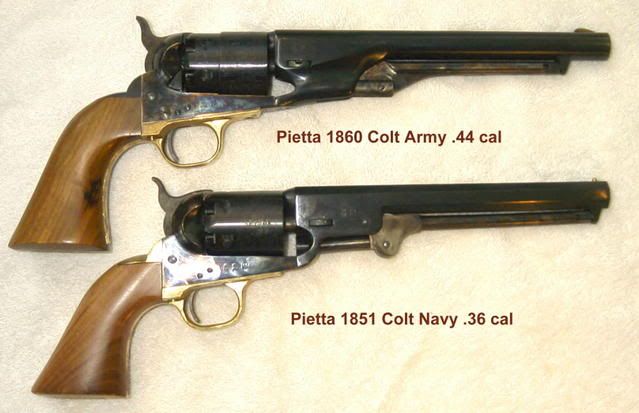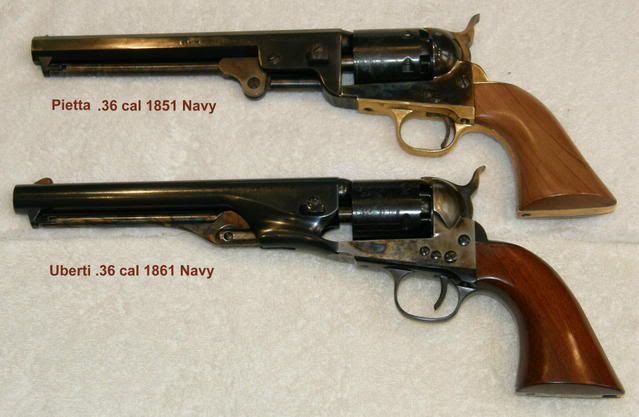OK, you can snicker if you want to at this question - I still need to know. . .
Today at a gun show I looked seriously at some different revolvers. On some of them -- a .36 Navy that I can remember for sure, but there were others -- the muzzle didn't appear truly circular like some others did. Is there something wrong? Or is it just the rifling "coming out" the end?
I love how they feel in my hand -- I seem to be leaning toward the Colts though. There are obvious differences in appearance between the '51 and the '60. Any functional differences or. . . how is the '60 an improvement over the '51?
Thanks for your help in answering these questions.
Today at a gun show I looked seriously at some different revolvers. On some of them -- a .36 Navy that I can remember for sure, but there were others -- the muzzle didn't appear truly circular like some others did. Is there something wrong? Or is it just the rifling "coming out" the end?
I love how they feel in my hand -- I seem to be leaning toward the Colts though. There are obvious differences in appearance between the '51 and the '60. Any functional differences or. . . how is the '60 an improvement over the '51?
Thanks for your help in answering these questions.






